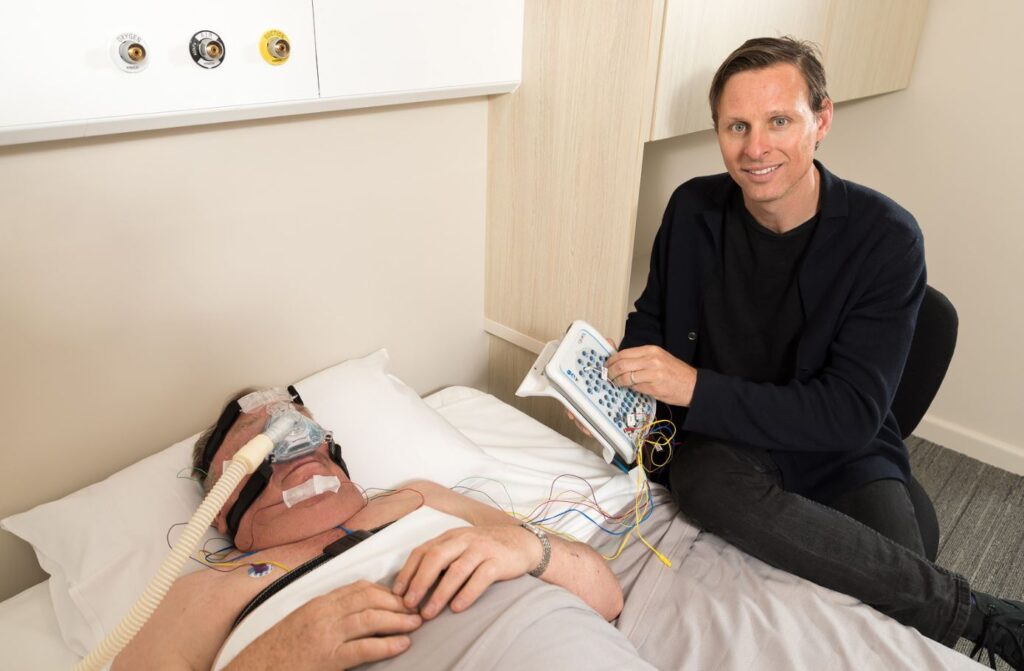The next step after receiving a sleep apnea diagnosis is to begin treatment, which may include using continuous positive airway pressure (CPAP). You may be wondering how to locate and choose the finest CPAP masks. You have a lot of alternatives, but you may avoid feeling paralyzed by following a few simple rules.
Select a CPAP mask style that’s right for you
In general, CPAP is designed to provide a steady stream of air that supports and maintains the opening of your upper airway, avoiding apnea and snoring. Your choice may depend on your particular demands, and this air may be administered by your mouth, nose, or both.
The majority of individuals use a mask that allows air to enter their nose. The majority of nasal cpap mask is made of a triangular-shaped gel or plastic cushion that covers the nose and sits just below the nostrils. A headpiece, often made of fabric, Velcro, or plastic clips, will be attached to this to keep the mask on your face. The CPAP machine itself will be connected to the mask via a plastic hose at the end.
CPAP masks come in a wide range of varieties, which often combine creativity with marketing. Many masks also come with a brace that adds a few contact points on the forehead to ease pressure. To avoid leaks or leaving markings on your face, additional cushions or seals could be used. Even some CPAP masks are made to float on an air cushion.
Related: Choosing a good sleep position with your CPAP masks

However, there are still more interesting choices. One consists of nasal pillows, which are generally plastic inserts that are put into the nostrils and resemble headphone earbuds. If you have claustrophobia or don’t like the mask leaving markings on your face, they are a great alternative. However, not everyone may find them to be comfortable.
Some other CPAP masks can accommodate those who mouth breathe since they are big enough to cover the mouth and nose. It can stop dry mouth. Even CPAP masks that cover the eyes and the complete face are available. While administering CPAP therapy, other mask interfaces may improve jaw alignment by acting as a mouthpiece.
Receive the proper size fitting
In the course of a sleep study, sometimes referred to as a titration study, the majority of participants are equipped with a mask.
This study’s objectives are to introduce you to CPAP, show you a few mask interface choices, decide the right size, and give you a chance to test it out while the pressure setting is chosen.
The personnel who conduct sleep studies often have a preferred group of CPAP masks that are effective for the majority of users. They’ll probably test them out on you first. Ask for more selections and, more crucially, request a different size without hesitation. They should be willing to assist you, whether it’s at a sleep study, sleep clinic, or the supplier of your equipment for durable medical equipment.
The majority of mask interfaces are available in a variety of sizes, depending on the manufacturer. It’s possible to get plastic size templates. Some CPAP masks may come in beneficial modifications like “wide” as well as intermediate sizes like “medium-small.” Try to choose a mask that is big enough to give enough air. Avoid using oversized CPAP masks that could slip on your face or leak excessively.
Make sure to test it out when it is connected to a device that is producing the appropriate amount of air pressure. Don the protective gear to fully enjoy the experience.
Utilize accoutrements that might ease compliance
In addition to finding the right design and fit, you may want to look at some of the various CPAP accessories that improve treatment compliance.
Both the mask interfaces and the headgear that is used to keep the CPAP mask on your head may have a wide range of capabilities. Many are constructed from washable cloth. Velcro may be used on some to adjust the fit. Others could include plastic quick-release clips that enable simple on and off and proper fitting after the first time. As a result, you won’t need to continually tweak it to obtain the ideal fit each time you use it.
Try wearing a chinstrap if you often find yourself inhaling through your mouth.

A machine with a ramp function, which begins at a low pressure and gradually rises up to your treatment pressure over a predetermined length of time, may be what you need if you have problems tolerating the pressure as you go off to sleep.
You may want to consider adding a mask liner if the plastic irritates your skin or if you are having difficulties obtaining a proper seal without significant air leak. Additionally, there are padding and cushions that help enhance the mask’s fit.
You have a wide range of practical alternatives at your disposal, which may improve your quality of life and increase the likelihood that you’ll follow the recommended course of action.
If anything isn’t working, fix it right away.
You are less likely to want to keep doing something if you run into issues right away or don’t see any benefits. Early issue solving is crucial since failing to do so might make you feel like quitting up.
Get assistance if your mask is the incorrect size, leaks excessively, causes sores or markings on your face, or if you are experiencing any of the countless additional issues related to using a CPAP machine. To have problems addressed, you may need to speak with your equipment’s manufacturer or your sleep specialist. If they are unwilling to assist you, locate someone else who will keep in mind that you are a valuable client and they are a company.
Finally, maintain the cleanliness of your equipment by according to the cleaning instructions, and replace worn-out components.
Examine how often you can change your CPAP equipment, including CPAP masks, since the majority of insurance coverage will cover such replacements.
Your life and health may be significantly improved by CPAP and choosing the correct CPAP mask at the beginning can make all the difference.

